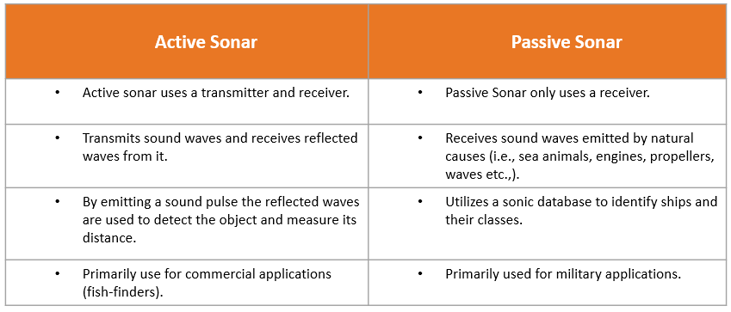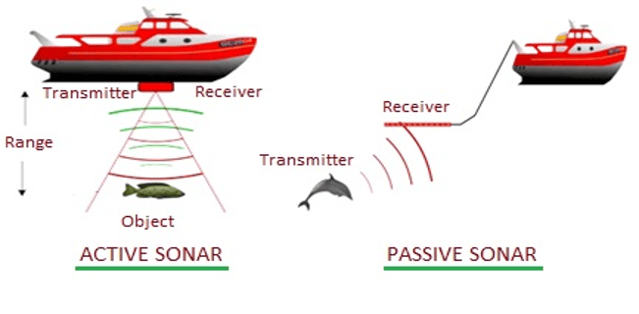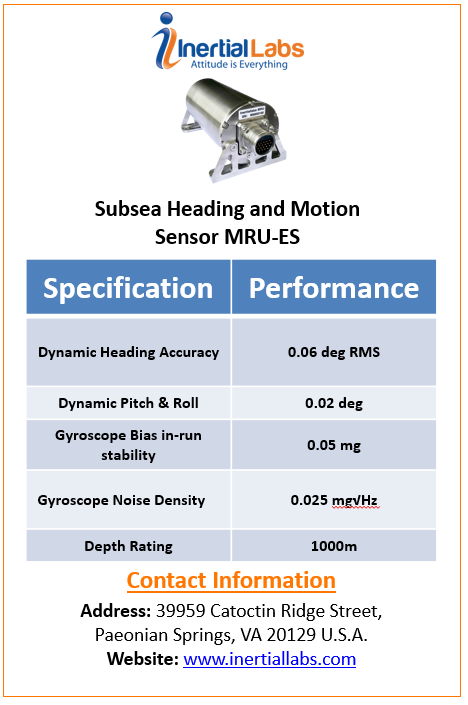Overview 
Exploring our planet's oceans is a tradition that goes back centuries. Humans have an intrinsic curiosity that is fueled by a desire to learn about our surroundings. Motivated by this desire, we have continued to make advancements in marine navigation technology that has enabled us to explore the unknown reaches of the planet's waters. To accomplish this feat, our ancestors used the natural tools given to them like the stars. From there, celestial navigation developed and devices such as the gnomon, kamal, sea astrolabe, quadrant, cross-staff, and sextant were created. By increasing our ability to go further out into the unknown waters, these ancient navigation devices paved the way for marine navigation technology to develop. These developments, in turn, fostered inventions that were thought to be mere fantasy and allowed humans to grow in their understanding of the Earth. That unsatisfied curiosity continued to live in our hearts and minds leading up to 1957 when the first autonomous underwater vehicle (AUV) was developed by the applied physics laboratory at the University of Washington by Stan Murphy, Bob Francois, and Terry Ewart. The early AUVs were used for research purposes such as the study of underwater diffusion, acoustic transmission, and submarine wake.
What is an AUV?
An AUV is a marine vessel that can dive deep underwater and navigate completely autonomously. Autonomous vehicles are completely independent and require no attachment to a service vessel or control station. An AUV can navigate underwater by a preprogrammed plan or in some cases, be remotely controlled by a user on a nearby vessel or onshore. AUVs are our extension into the ocean. Whether it is near the surface or underwater, AUVs possess the capabilities of going where our physical human limitations would have historically prevented us from venturing.
Applications
AUVs have a wide range of capabilities that lends them to a variety of commercial, government, and military uses. AUVs' have greatly improved our ability to survey the Earth’s oceans and ocean floor which has allowed us to grow in our understanding of the world we live in.
Given the independent nature of AUVs, they can perform tasks such as searching for planes, ships, or submerged cars after accidents. They are capable of ocean floor mapping, marine wildlife maintenance, debris field detection, fishery operations, and valuable scientific research without any real-time human input. Given the challenging nature of exploring the Earth’s oceans, AUVs have greatly expanded man's ability to survey the part of our world that makes up a large majority of the Earth. With AUVs, humans will continue to push the boundaries of the impossible by exploring of the sea below.
Hardware and Navigation Techniques of an AUV
AUVs possess the capabilities to dive deep into the ocean, under ice, and into other areas where typical forms of communication are unable to reach. They have a wide variety of uses and are invaluable resources when researching the oceans. But how do AUVs do this? What hardware do they possess and what navigation techniques do they employ when navigating difficult terrain like the ocean?
Hardware and Supporting Technology
Passive Sonar
In some cases, AUVs utilize a variation of sonar called passive sonar. Passive sonar, juxtaposed against active sonar, is a way to measure acoustic waves that are naturally occurring around the AUV.

This use of naturally occurring acoustic waves is effective because it eliminates the need for the vessel to create sound waves; which is done by an active sonar system but could disrupt the environment an AUV is monitoring. Passive sonar is desirable because it decreases mechanical and interfacing complexities for the system, thus reducing the cost and risk of failure for operators. To learn more about the difference between active and passive sonar click here.

Navigation Sensors
- Motion Reference Unit (MRU)
The Inertial Labs MRU utilizes advanced Kalman filtering methods to sensor fuse pressure sensors, 3-axes each of calibrated in full operational temperature range precision fluxgate magnetometers, accelerometers, and gyroscopes to provide accurate position, velocity, heading, pitch and roll for marine applications like AUVs.
- Doppler Velocity Logs (DVL)
A DVL is used in AUVs to measure the velocity of the underwater craft relative to the ocean floor. The DVL is critical in correcting real-time position, navigation, and timing data on the AUV when conducting subsea operations.
- Global Navigation Satellite System (GNSS) Receiver
A (GNSS) receiver is a satellite-based navigation system that uses signals from satellite constellations to find the location of a vehicle. What is important to note here is that not all areas of the Earth have GNSS accessibility, which is known as GNSS-denied territories. Areas like the deep ocean are particularly likely to be GNSS-denied territories. That is why it is important to have a variety of sensors available to systems like AUVs. Many AUVs take occasional voyages to the surface mid-mission and will utilize a GNSS receiver to correct position, velocity, heading, and timing errors that may have built up while the vessel was deep underwater, out of reach from GNSS connectivity.
Acoustic Modems
Acoustic modems are physical devices placed underwater or on the surface that can transmit position data to an AUV. The AUV can then use that data to triangulate its position. Acoustic modems transmit data underwater by transforming digital signals into low-frequency sound waves that can be understood by a receiving modem. The receiving acoustic modem then converts the sound wave back to a digital signal to be read by the onboard systems used by a surface buoy or other receiving entity. This two-way communication allows for data transmission in places where conventional methods of communications don't work (GPS, high-frequency RF transmissions). Additionally, these digital signals allow the AUV to determine its position by using a technique called dead reckoning.
Navigation Techniques
Dead ReckoningDead reckoning is the process of finding the current position of the vehicle by using the previously known position, estimated speed, direction, and heading of the vehicle over a period of time. Acoustic modems aid in this process of dead reckoning by transmitting valuable position, navigation, timing (PNT), and orientation data that allows the AUV to know its position in reference to its previous location.
Long Base-Line Tracking
Long-baseline (LBL) tracking systems use hardware like acoustic modems and other underwater tools that the AUV detects and turn into location data. By using that data, the AUV can navigate the ocean floor with high accuracy. This navigation technique can also be classified as an acoustic positioning system (APS). The downside to this method is that the AUV is dependent on these tools to find its position and heading.
Simultaneous Localization and Mapping (SLAM)
SLAM is the process in which an unmanned vehicle autonomously builds an image of its surroundings. By using SLAM techniques the AUV is able to localize its self in that environment and gain important orientation and navigation data.
The Inertial Labs MRU-ES with Aiding Data
The Inertial Labs MRU-ES is critical in an AUVs' ability to navigate autonomously by providing valuable position, velocity, and timing data. Furthermore, the MRU-ES is capable of measuring the heave, surge, and sway of a vehicle which grants the AUV the ability to navigate in GPS-denied territory. Additionally, while operating in subsea environments, it’s always beneficial to input aiding data from other sensors to increase the accuracy of position, orientation, timing, and velocity. During extensive maneuvers or testing during harsh weather conditions, increased accuracy from external input into the Inertial Labs MRU provides an extra layer of comfort. The Inertial Labs MRU-ES can receive data from external sensors using industry-wide accepted sentence formats, where it directly passes it to internal algorithms while operating. This aiding data, coming from the AUV, supplies important heading corrections, particularly during GPS outages. This is because these instruments do not rely on satellite Line of Sight (LoS). Additionally, data can be inputted into Inertial Labs MRUs from an external GNSS receiver (if the AUV rises to the surface of the water).
Inertial Labs MRU-ES and AUVS
Components of Inertial Labs MRU-ES
- Inertial Measurement Unit (IMU)
The Inertial Labs IMU provides applications, like AUVs, with high accuracy and performance. The Inertial Labs tactical grade IMU has an exceptional low in-run bias (1 deg/hr) which results in a low offset bias over a period of time and minimizes drift in the application. The Inertial Labs IMU also provides valuable orientation data for the AUV that allows the vehicle to have a better understanding of its heading and orientation while on mission.
- Subsea Enclosure
The Inertial Labs MRU has the capability to be submerged underwater when inside a stainless steel enclosure. This, of course, protects the hardware of the MRU unit while submerged underwater. Our Inertial Labs subsea enclosures are capable of diving up to 1000m, granting a vessel greater mobility and range in its diving missions.
- Embedded Fluxgate Magnetic Compass
The embedded fluxgate magnetic compass is utilized for accurate heading calculations based on magnetic or true north. The fluxgate magnetic compass also aids in navigation calculation through its refined Kalman filter; capable of maintaining an accurate PNT solution even in a GPS-denied environment.
Conclusion
The Marine industry is known for its price tag. Current market solutions for AUV navigation and orientation technology often push reliability and professionalism before product performance and functionality. Inertial Labs is committed to meeting all those needs not just a couple. By analyzing what sensors are available on AUVs, Inertial Labs supplies end-users with functional, reliable, and high-performing solutions while maintaining the highest level of professionalism. The Inertial Labs MRU-ES has been engineered to accept aiding data from a multitude of different sensors. Finally, after decades of research, the MRU-ES has evolved to be configurable with the most critical sensing components like a DVL or an IMU, which are both commonly used by marine vessels like AUVs. Attitude is Everything and with the Inertial Labs MRU-ES, autonomous underwater vehicles gain access to accurate GPS-denied navigation, attitude, and timing data that allow end-users and developers to advance and develop technologies needed to support the exploration of the hardest to reach spots on Earth.

 What Do You Think?
What Do You Think?
Here at Inertial Labs, we care about our customer's satisfaction and want to continuously be able to provide solutions that are specifically tailored to problems that are occurring today, while vigorously developing products to tackle the problems of tomorrow. Your opinion is always important to us! Whether you are a student, an entrepreneur, or an industry heavyweight. Share your thoughts on our products, recommendations you have, or just say hello at opinions@inertiallabs.com.
Trademark Legal Notice: All product names, logos, and brands are the property of their respective owners. All company, product, and service names used in this document are for identification purposes only. Use of names, logos, pictures, units and brands does not imply endorsement
